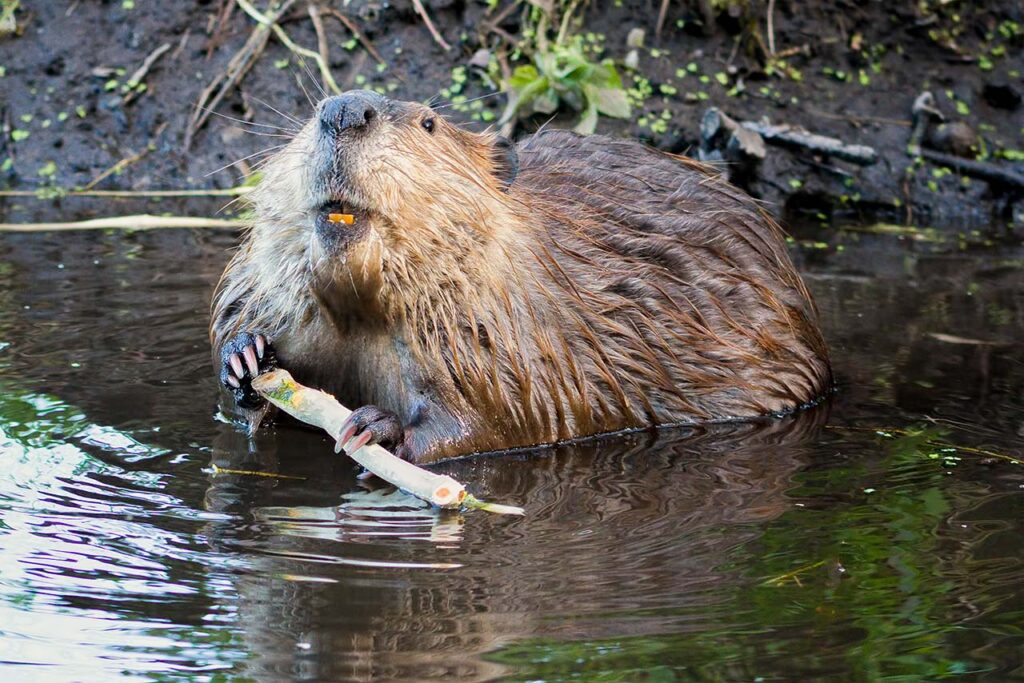Beaver Facts
Beavers can be found all across North America, except for the northernmost regions of Canada and the deserts of the United States and Mexico. Mating occurs in January of February, with one to four offspring born after three months. They can live between 10 and 20 years in the wild, depending on environmental conditions. Beavers are nocturnal and love to eat bark, particularly that of maple, willow, beech, birch, alder, and aspen trees. Plants like flowers and roots are also favorites.

Beaver Damage
Beavers can plug drainpipes and ditches, and wash out roads and driveways. Flooding may also lead to inaccessible routes, and later, potholes. This excess water can ruin farmland and wooded areas, killing crops and other plants. Since wood is a favorite of the beaver, it often cuts down trees or shrubs in search of food.
Beaver Disease
Water supplies may be contaminated because of beaver droppings. Ingesting contaminated water can lead to the spread of disease. Beavers can potentially spread rabies and tularemia. Spread through the saliva of an infected animal, rabies causes the brain to swell, along with fever, violent movements, paralysis, confusion, and loss of consciousness as the disease progresses. Tularemia is an infectious disease that causes fever, tiredness, loss of appetite, red skin lesions, and possibly death if left untreated. If you are in contact with a beaver or develop any unusual, flu-like symptoms, seek immediate medical attention.
Types of Beaver
Beaver Identification
Beavers average 35 to 46 in length. Beaver fur is usually various shades of brown and waterproof. Beavers possess large, orange teeth which they use to cut wood. Another identifiable feature of the beaver is its wide, flat, and paddle-shaped tails.
Beavers in the Yard & Garden
These maple-munching rodents love any environment where water is present. Ponds, lakes, marshes, rivers, and streams are their preferred places to build dams. Because they like deep water, these dams also help them create deeper ponds in the surrounding area. If you’ve got streams or ponds near your home, you may notice that they may be flooding. Dome-shaped dams and lodges held together with mud and chewed branches and trees, piles of wood chips, fallen trees, and stumps near water are all telltale signs you have beavers. Beavers make slapping noises with their tails. They also whine, squeal, and moan. However, you’ll have to listen carefully to hear these. You won’t see tracks often, but when you do, they are the size of a human hand and will have webbed toes. Droppings will be dusty and the size of ping-pong balls. They are commonly found at the bottom of dams. Large piles of mud will smell of castor near where they make their home.
Frequently Asked Questions
How do I keep beavers away?
As creatures that can drastically alter an environment, beaver control can get complex, and may even cause more harm than good. Consulting with pest professionals can help you determine what actions to take so that the outcome is positive. If you’re trying to protect your crops, wrap hardware cloth around trees, shrubs, and other tall plants. Fencing may be an option as well. If water levels are of concern, installing water level control devices (WLCDs) may help with flooding. Professionals will be able to direct you as far as they type of devices to purchase and where to place them.
The safest way to take care of a beaver problem is to consult a licensed pest control expert who can remove the critters and protect the property.
What are the benefits of professional beaver or wildlife pest control?
Expert pest specialists have the educational background, equipment, and skill to control and remove wildlife nuisances from a property in a safe, efficient way.
If you’re struggling with beavers on your property, contact us. Our technicians can remove the critters and help you regain control of your property and sanity.


